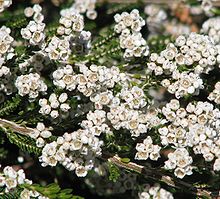Thryptomene saxicola
Appearance
| Thryptomene saxicola | |
|---|---|

| |
| White flower form | |
| Scientific classification | |
| Kingdom: | Plantae |
| Clade: | Tracheophytes |
| Clade: | Angiosperms |
| Clade: | Eudicots |
| Clade: | Rosids |
| Order: | Myrtales |
| Family: | Myrtaceae |
| Genus: | Thryptomene |
| Species: | T. saxicola
|
| Binomial name | |
| Thryptomene saxicola | |
| Synonyms | |
| |
Thryptomene saxicola, commonly known as rock thryptomene, is a shrub species in the family Myrtaceae.[1][2] It grows to between 0.3 and 1.5 metres high and produces white or pink flowers between February and November in the species' native range. The species is endemic to Western Australia.[1]
Cultivars include:
- F.C. Payne' ('Paynei') - similar to the typical form, introduced to cultivation in the 1960s or before.[3]
- 'Minginew' - mauve-pink flowers[4] It has recently been hypothesized that this may be a form of Thryptomene hyporhytis or an unnamed species.[2]
- 'Pink Lace'- deeper pink flowers, compact form[3]
- 'Seatonii'[3]
- 'Supernova'- pale pink flowers[4]
References
- ^ a b "Thryptomene saxicola". FloraBase. Western Australian Government Department of Biodiversity, Conservation and Attractions.
- ^ a b "Thryptomene saxicola". Australian Plant Name Index (APNI), IBIS database. Centre for Plant Biodiversity Research, Australian Government, Canberra. Retrieved 1 May 2011.
- ^ a b c Spencer, Roger (2002). Horticultural Flora of South Eastern Australia. UNSW Press.
- ^ a b Elliot, Rodger (2008). Australian Plants for Gardens in the Sun. Rosenberg Publishing. p. 116.
